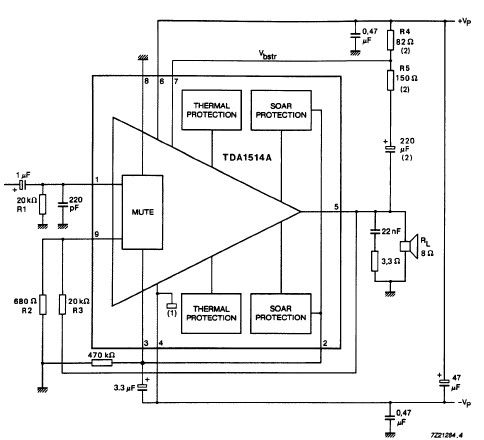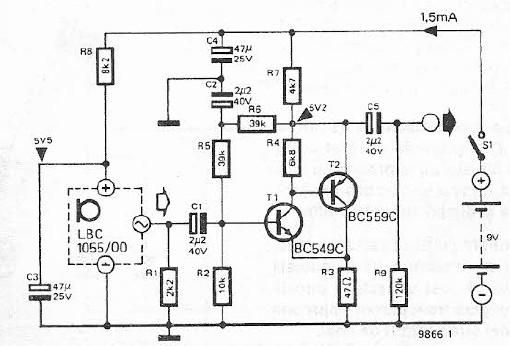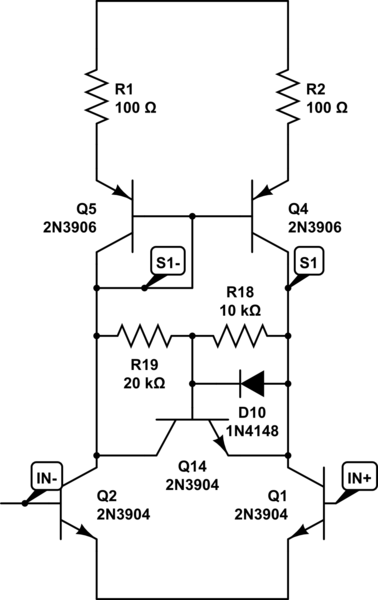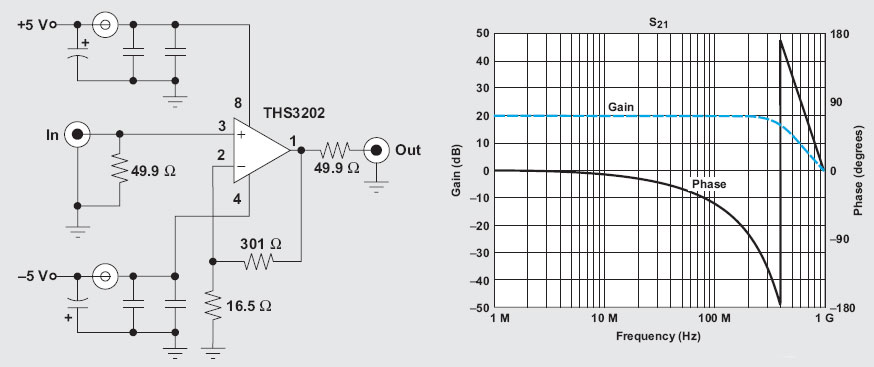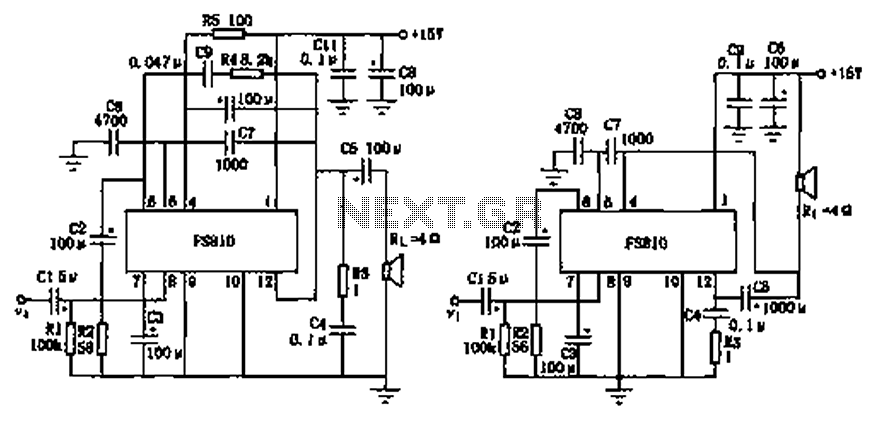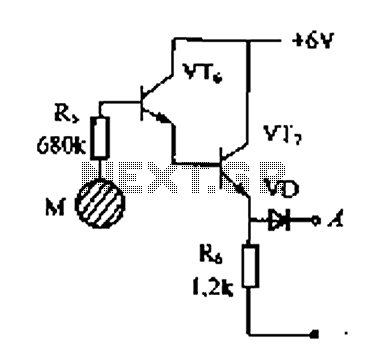
Small LM386 Amplifier
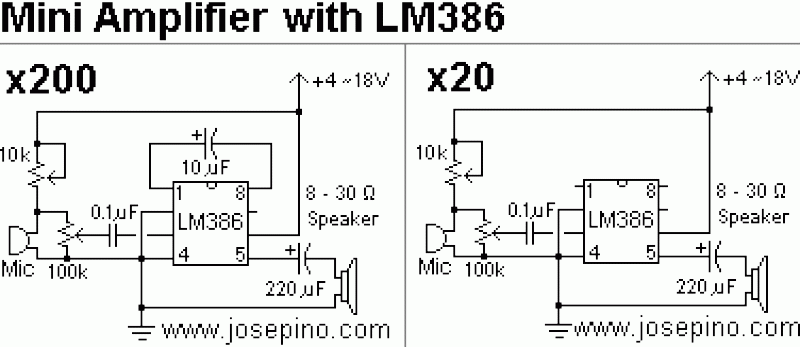
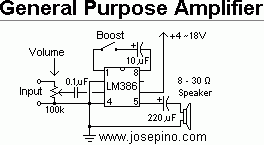
The LM386 is a versatile low-voltage audio power amplifier designed for various applications, particularly in portable devices powered by batteries. It can deliver an output power ranging from 125mW to 750mW, depending on the supply voltage, making it suitable for projects that require audio amplification without the need for complex circuitry. The operating voltage range is between 4V and 18V, with specific versions optimized for narrower ranges (5V to 15V).
The LM386 features a voltage gain that can be adjusted from 20 to 200, which is particularly advantageous for applications where input signals may vary significantly in strength. The self-centering output allows for simplified design, as it does not necessitate dual supply voltages, which are commonly required by other amplifier designs.
In a typical application circuit, the gain can be adjusted using a switch that modifies the configuration of a 10µF capacitor, enabling a "boost" feature to enhance the gain to 200 when the input signal is weak. The circuit includes a 10k variable resistor for adjusting the sensitivity of an electret microphone and a 100k resistor for volume control.
Although some theoretical designs suggest the need for a pre-amplifier, such as a 741 operational amplifier, practical tests indicate that the LM386 can function effectively without one, provided the variable resistor is correctly adjusted. Care should be taken when connecting output devices, as direct connection to speakers is not recommended unless using a tweeter or piezoelectric speaker, which can handle the output directly.
Additionally, the circuit design allows for flexibility, as the 220µF capacitor can be substituted with other capacitance values if necessary, ensuring that the circuit can be adapted based on available components. This amplifier circuit is suitable for a wide array of applications, including battery-operated radios, tape players, intercoms, and ultrasonic applications, making it a valuable component in audio amplification projects.This is one of my favorites. The LM386 is a low voltage audio power amplifier. It can provide 125mW to 750mW, enough for any project that uses audio. This circuit can work with batteries, requieres minimum external parts and works from 4 to 18 Volts (contact the manufacturer or read the technical info. Some versions works only with 5 to 15V.) The power output depends of the voltage. The power output is 125mW when the voltage is 6V. The voltage gain goes from 20 to 200 and the output is self-centering, so doesn't need dual voltage as other amplifiers.
It can be used on battery radios, tape players, intercoms, also, as ultrasonic amplifier. This chip is the "555" of the amplifiers. Here is the typical application for this chip. Here are two schematics, the first one have a gain of 200 and the second one is only 20. You can use a switch for the 10uF capacitor to have the "boost" option.
The 10k resistor is used to adjust the sensibility if the electret microphone, the 100k resistor is used to adjust the volume. In theory, this circuit will not work because it needs a pre-amplifier. Supposedly, a 741 or any othe pre-amplifier is needed. As I said before, I don't follow the theory. I already verified that the pre-amplifier is not needed, just adjust the 10k variable resistor. In fact, You may not be able to get the circuit to work properly with a pre-amplifier. Warning: May be too loud The 220uF capacitor can be replaced by any other if that value is not available.
Do not connect the speaker directly to the output pin. If you are using a tweeter (or piezoelectric) you can connect it directly. 7/9/2006 - UPDATE: This schematic can be used for almost ANY application that needs an amplifier. The switch labeled "Boost" activates the gain of 200 if the input signal is too weak.
